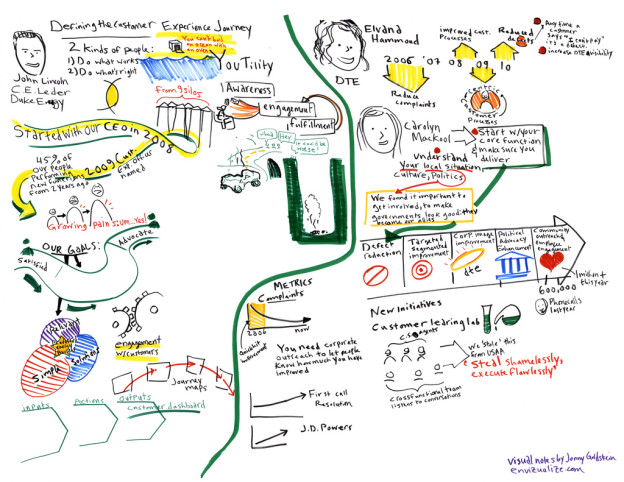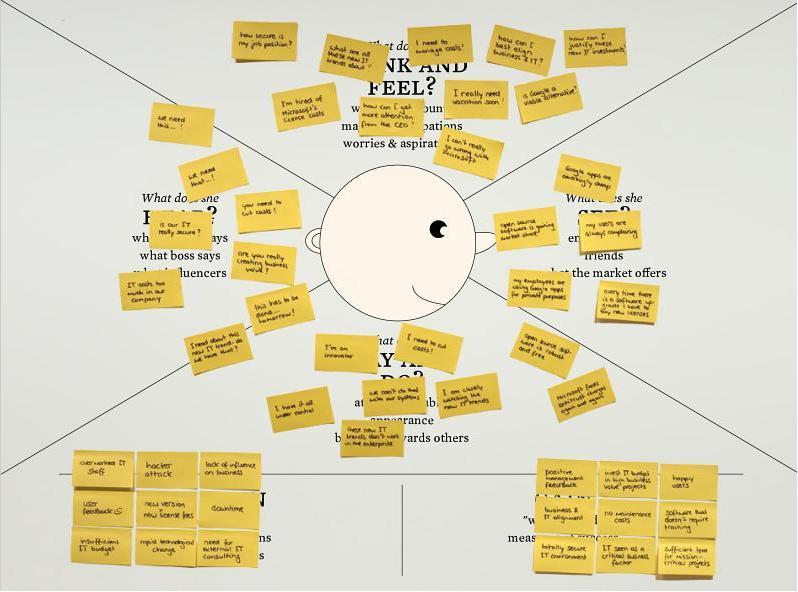Ever heard of a customer journey map? If you’re not in sales, you might not have. They’re critically important documents when it comes to sales strategy, yet too many companies make do without them. Why?
Maybe because they’re a bit too open-ended. Similar to vision boards, journey maps aren’t precise enough for the heavily data-driven tastes of some sales departments. But that isn’t to say that they don’t have their place. Used right, a customer journey map is the perfect tool for explore the “what ifs” that arise during product research and conceptual design.
Personas, timelines, the emotions being felt by customers, touchpoints, channels – these are all things you should be thinking about in a very personal manner when designing a product. And when selling it.
So, if you’ve never made a customer journey map before (or if you just want to compare notes), here are my 7 key steps:
Step 1 – Review goals for the product or service
First of all, what does your product do? Not just what it does per the copy on the back of the box or in the tiny text of the user manual. What does it really do?
Once you’ve answered that question, the next question is whether you can realistically achieve what you want to with your resources. In other words, does the product do what I want it to do?
Lastly, why should I, as a customer care?
Only by coming up with solid answers to these three questions can you then answer the fourth question: Is this product successful?
Step 2 – Gather customer research
This step is much easier if you already have an established customer base and analytics platform in place. But even if you don’t, you can research industry standards and trends.
In this step, you want to get as much information as you can about your target customer. That means conducting customer interviews, sending out surveys, keeping track of customer support logs, rigorously using web analytics tools like click-trackers, following social media activity, and researching the competition.
There’s a reason the last chapter of The Art of War is titled Intelligence and Espionage. (Okay, maybe leave out the espionage part.)
Step 3 – List sales touchpoints
The third step is all about knowing your point-of-sale (POS) system in and out. If you were a customer, how would you interact with your site? Where would you do your research, and are there any linkbacks in those pages to your product’s landing page? How would you approach the shopping cart?
For example, if I’m a customer and I want to pay a bill, I want to have clear and concise options. Can I pay online, in-person, and via mail? I should be able to.
Once more: list out all your touchpoints.
Step 4 – Make an empathy map
Empathy maps are a very useful tool for getting into the heads of your prospective customers. You should start out by listing various user scenarios in which your customer might find him or herself. For example, how would your customer feel while reading your FAQ? How confident would they be by the time they reach your product page that they’ve made the right choice? What will they do when the shopping cart takes them away to a payment processing site?
You want to over-analyze how a customer might react to each and every one of those scenarios given your current marketing, POS, and the product itself.
5. Brainstorm lenses
Quickly! Using the power of free association, list down simple phrases that best describe your customer journey, your brand presence, and your product’s place in the market. “Lenses” are hands-down the best way for the whole team to quickly get a new perspective on your product and how you’re selling it. It’s a fail-fast sales department’s best friend.
6. Create an affinity diagram
An affinity diagram is a large, one-size-fits-all approach that allows you to gather together the output of your brainstorming sessions and relate everything together in a meaningful and cohesive way by categorizing the natural relationships that emerge. It can be daunting, but when done with the entire team it can be incredibly eye-opening as well. Invest some time into making one, and I guarantee you won’t regret it.
7. Sketching the Journey
Finally, you reach the beginning of the journey. Combine your ideas into a single, seamless narrative that follows your customer along every step of the sales experience.
Once you get the first draft down, share it with the entire sales, marketing, and product development teams. Then refine and repeat until it’s ready. When you think you’ve got a winner, present it to key stakeholders and get feedback. Once you get the green light, it’s all systems go. Share the customer journey map throughout the company until it’s internalized by every last employee.
Print it out. Pin it to walls. Live and breathe it at work.
I guarantee you’ll never look at selling quite the same way again.










